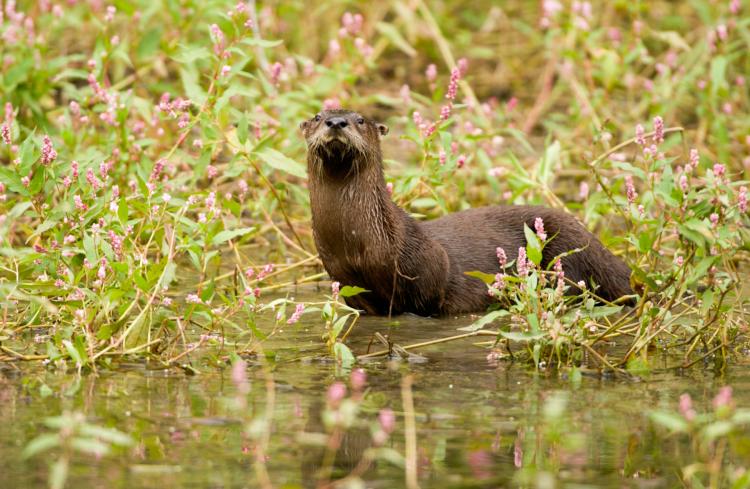The river otter (Lutra canadensis) is common in Missouri. Its diet is varied and includes crayfish, fish, frogs, snakes, and the occasional turtle. Research indicates that river otters have minimal impacts on fish populations in large streams, rivers, and lakes but can be detrimental to those in small streams and ponds.

The Wildlife Code of Missouri classifies the river otter as a furbearer and game mammal that may be taken during the prescribed trapping season. See current regulations for details. The Code specifies that damage-causing river otters may be shot or trapped out of season without a permit. Refer to 3 CSR 10-4.130 Owner May Protect Property; Public Safety of the Code for details and restrictions.
Title
Exclusion
Use fencing of 3-by-3-inch or smaller mesh wire to exclude otters from small ponds or tanks where fish are concentrated. Electric fences can also be used but require frequent inspection and maintenance. Electric fences are most effective when used in conjunction with conventional fencing.
Title
Fumigants & Repellents
These are not recommended because none are known to be effective. Moth balls are not effective. The naphthalene they contain is toxic, and the vapor is harmful to humans.
Title
Trapping
Foothold and body-gripping traps and snares are the most effective means for removing problem otters. Restrictions apply, so see current regulations for details. Your local county conservation agent can likely provide the name of a local trapper who can assist you. In some situations, the Department wildlife damage biologist can provide instruction, equipment, and assistance.
Only a few cage-type traps are designed specifically for river otters because traps must be at least 48 inches long to be effective. An alternative is to modify and combine two 12-by-12-by-36-inch Tomahawk cage traps. Read the Missouri’s River Otter: A Guide to Management and Damage Control booklet below for complete details. Place cage-type traps in crossover trails.
Title
Shooting
Although this method is unreliable, otters can be shot, where allowed, if the opportunity arises. Check with local authorities regarding the use of firearms. Otters are often active during daylight hours and are sometimes seen feeding on fish in farm ponds. Because they have poor eyesight out of the water, they can be stalked by a skillful shooter at these locations. Exercise caution because ricocheting bullets are unpredictable and dangerous.





















